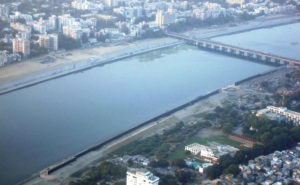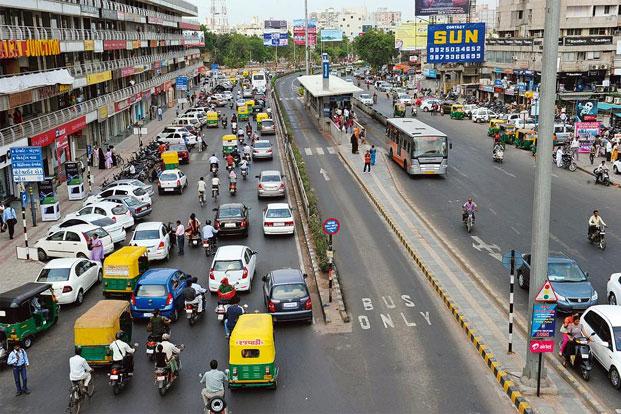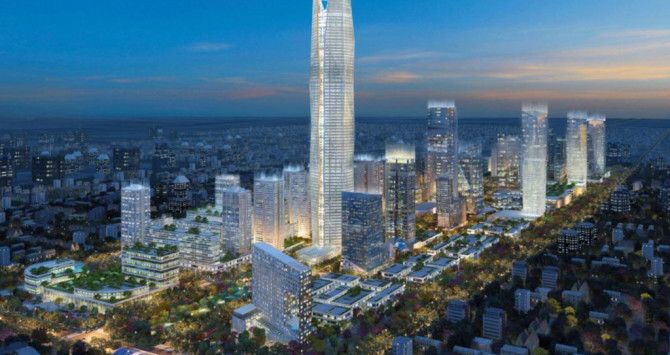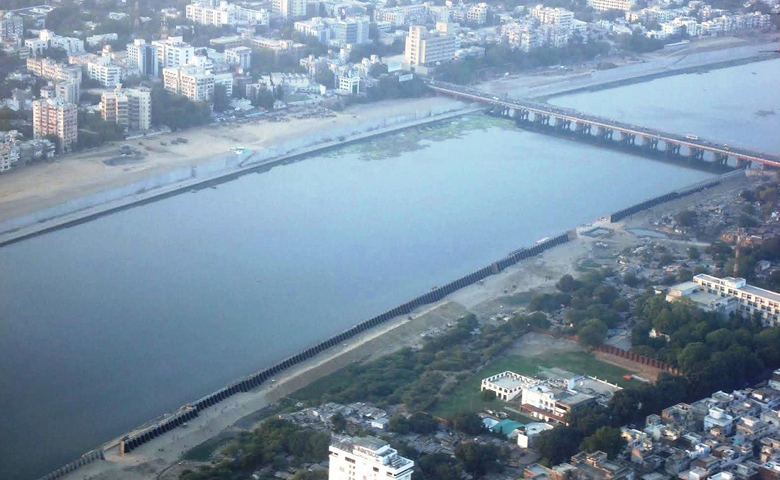Today (26/2/2018) as it turns 607, Ahmedabad by far is one of the most planned city with infrastructure of the city keeping a healthy pace with the growth of the city. It is one of the prime examples of how urban development should happen. The planning authority basically draws up town planning layout for certain part of the town and goes ahead with building the infrastructure. The resultant development is driven byt eh market economy and by the private developers. This is very unlike the other metros, which have remained woefully behind in terms of the planning and execution of the infrastructure.
Mumbai / Bangalore are some of the prime examples of how lack of infrastructure has led to crippling of the city structure. In attempt to lower their travel time in Mumbai, the privileged of the lot have shown the willingness to pay any premium for the real estate, making the city one of the most expensive cities of the world to live and work in. For an average Mumbaikar travel time to work from home if it is less than 45 minutes, it shall be a dream come true. In Ahmedabad for majority of the dwellers, that is like the maximum that one may need to travel.
To build a residence which is 37 floor tall in heart of the downtown one of the most expensive residences in the world, with offices and helipad, just so that you can save travel time speaks volume of how miserable is the traffic condition. Ambani’s the richest of the Indians, can afford to do so, but for majority of the mumbaikars, it is wishful thinking.
Coming back to the city of Ahmedabad, what was and still by far is still a city where the end of the cities can be easily travelled, and where the development of the road and traffic infrastructure has infact pushed the city development, is now becoming one of the chaotic metros.
One look at 7pm at any one of the major city cross roads, and one can easily deduce that is city is bursting at its seams. But then is it because the infrastructure has not kept pace with the development / we as a community not as disciplined as the to other urban dwellers / or it is simply that the city planners failed to realize the growth pattern and not planned the infrastructure accordingly.
To us it is combination of all the three, the traffic movement discipline surely is greater cause of concern than the other to for the city of Ahmedabad. As a city which is of the one of the first indian city to be given the world heritage status, which is 6 centuries old, is woefully short of the traffic discipline.
One prime example of how the city is becoming chaotic, A whole lot of new residential development have happened around south bopal which is accessed through mainly prahladnagar – new karnavati road and bopal ambli road. On the other hand, the majority of the people coming back to city from sanand also use the same connections. This have resulted in the phenomenal rise in the traffic on these roads in last

2 -3 years. Reason for the same, may be beyond any imagination conceivable, so benefit of the doubt should go to city planners.
But here we are the commuters, struggling to reach to the other end during traffic jams. And as if the through traffic was not enough, Bopal Ambli road is expected to witness close to million sqft of commercial development in the year or so right at the Iskcon junction. This will add nothing else than 1500 – 2000 cars and more than double number of two wheelers to the road on key office timings. Imagine the chaos that will add to existing near chaotic situation. Same situation is at the other end of the Bopal Ambli with similar amount of commercial space coming up in the next two years.
Traffic movements of only these spaces will create chaos, add to that the already increasing through traffic. In such scenarios, the attractiveness of the real estate goes down, causing the vacancy levels and lower rentals in many cases. Having said so, we do not expect such movements only because, the city does not hold enough grade A / B commercial inventory to accommodate the requirements.
But globally it has been seen that slowly but surely there is definite migratory movement to newer more open and cheaper space options. Canary Wharf in London, BKC in Mumbai are prime examples of this trend. New TP Scheme in and around Sarkhej may soon become the new Prahladnagar.
Though the amount of traffic impact of Sanand and South Bopal would have been difficult to comprehend, but today we sit on the problem which needs to be addressed and to be addressed in immediate future. So then do we have to built more bridges, more under passes, to provide relief to the commuters?
This brings about an interesting debate, of should the city authorities micro govern of what can be built and what not to build at the particular site?
Currently the city, very broadly allows development based on FSI norms and road width, but not based on type of particular type of asset. As per the principles of f

ree market economy, development is un restricted with only FSI and buildings guidelines to be adhered to. The developer depending on the market sentiment end up developing a particular asset class, say commercial complex and next door plot may end up becoming mid income housing colony. The infrastructure needs are different in both cases.
For the better planning of the city infrastructure, the planners should be able to visualize and dictate to an extent the kind of development on the particular micro market. That will allow them to plan of the road infrastructure accordingly.
Let us take an example of say Corporate Road nr prahladnagar. The two kms stretch from prahladnagar garden junction to Vodafone house and beyond is a mix bag. There are some commercial complexes, residential bungalow commune to residential high rises. Other than any major retail space, everything is present on that 2kms stretch.
Now imagine the entire road was planned as commercial space expansion of the prahladnagar region. If that was the case, the thorough fare would have been planned for six lane with only one inter section on the road leading to easy flow of the traffic. Only commercial spaces are allowed to be developed on this road creating plentiful space in one single stretch. Concentration of the activity at one place will lead to development of clear exit routes for the traffic and also the drainage and water supply infrastructure can be planned accordingly.
Imagine getting out of the movie theatre, there is clear exit route planned and everybody exits one by one in single direction. There is no movement coming from the other side. As a result, even if it is slow but clear movement in single direction. Now Imagine traffic at any of the major junctions
On the other hand, are location like drive in road, which with the Metro Rail work going on, is a place that we all want to avoid driving. But as the place is undergoing a change for betterment, the real estate valuations are on the rise and expected to see upward movement as work nears completion. Such infrastructure development though painful in time of execution are great for the city to move ahead with the changing time.
Again national and global precedents of infrastructural development like METRO Rail have been very beneficial for the region through which it is being built. With a wish, that the city gets planned more scientifically and most important for the city of Ahmedabad to maintain as one of most well planned urban behemoth of the country, it has to execute new infrastructural development work at the speed which is unprecedented.
This year city budget and state budget have in a way echoed the feeling and put a strong impetus on adding more and more infrastructure to the urban as well as rural regions. So let us wish for the best.
Long Live Ahmedabad: Happy Birthday once again



